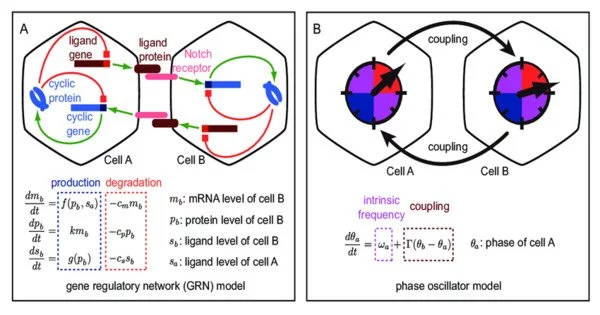Oscillating genes, also known as oscillatory genes, are a type of gene that has periodic changes in its expression levels throughout time. In molecular biology, it is a gene that expresses itself in a rhythmic or periodic fashion. Oscillating genes are typically circadian and can be identified by periodic changes in an organism’s condition. These genes are important in a variety of biological activities, such as circadian rhythms, cell cycle regulation, and developmental processes.
Circadian rhythms, which are controlled by oscillating genes, last around 24 hours. Circadian rhythms can be found in plant leaves opening and shutting at different times of the day, as well as animal sleep-wake schedules. Other periods are possible, such as 29.5 days due to circalunar rhythms or 12.4 hours due to circa tidal rhythms.
Genes that oscillate include both core clock component genes and output genes. A core clock component gene is one that is required for the pacemaker. An output oscillating gene, like the AVP gene, is rhythmic but not required by the pacemaker.
- Circadian Rhythms: One of the most well-known applications of oscillating genes is in the regulation of circadian rhythms. Circadian rhythms are biological rhythms that follow a 24-hour cycle and affect different physiological processes such as sleep-wake cycles, hormone production, and body temperature. Genes associated in the circadian clock, such as “Clock” and “Period,” exhibit oscillatory expression patterns, which aid in the regulation of these daily biological processes.
- Cell Cycle Regulation: Oscillating gene expression is essential for appropriate cell cycle control. Cyclins and cyclin-dependent kinases (CDKs) are examples of genes whose expression levels fluctuate during the cell cycle. These genes control cell cycle development through the G1, S, G2, and M phases.
- Developmental Processes: Oscillatory gene expression also plays a role in the development of multicellular organisms. Genes involved in the segmentation of the fruit fly Drosophila, such as “Hairy” and “Even-skipped,” exhibit oscillatory patterns of expression during development, contributing to the formation of distinct body segments.
These oscillations in gene expression are frequently tightly regulated and are critical for ensuring the right timing and coordination of many biological processes. They are governed by a complex network of regulatory components, including transcription factors and feedback loops, which guarantee that the appropriate genes are turned on and off at the appropriate periods. This temporal regulation of gene expression is critical for the proper functioning of organisms and is an active field of research in molecular biology and genetics.
















